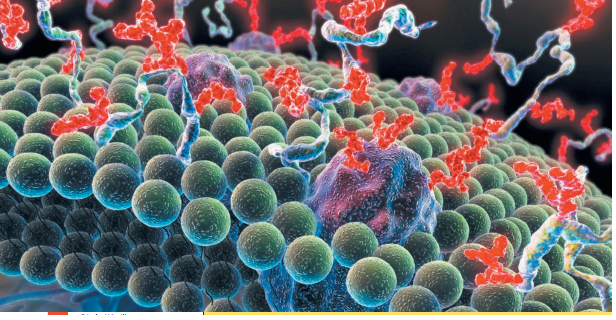
The Plasma Membrane and Membrane Potential
All cells are enveloped by a plasma membrane, a thin, flexible, lipid barrier that separates the contents of the cell from its surroundings. To carry on lifesustaining and specialized activities, each cell must exchange materials across this membrane with the homeostatically maintained internal fluid environment that surrounds the cell. This discriminating barrier contains specific proteins, some of which enable selective passage of materials. Other membrane proteins are receptors for interaction with specific chemical messengers in the cell’s environment. These messengers control many cell activities crucial to homeostasis.
Cells have a membrane potential, a slight excess of negative charges lined up along the inside of the membrane and a slight excess of positive charges on the outside. The specialization of nerve and muscle cells depends on the ability of these cells to alter their potential on appropriate stimulation. Much of nerve and muscle function is geared toward maintaining homeostasis.
At the end of the lesson, students will be able to understand;
- Membrane Structure and Functions
- Cell-to-Cell Adhesions
- Membrane Transport
- Unassisted Membrane Transport
- Aassisted Membrane Transport
- Membrane Potential


